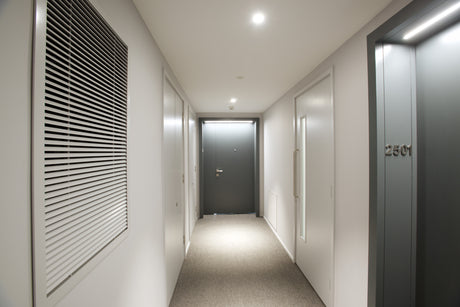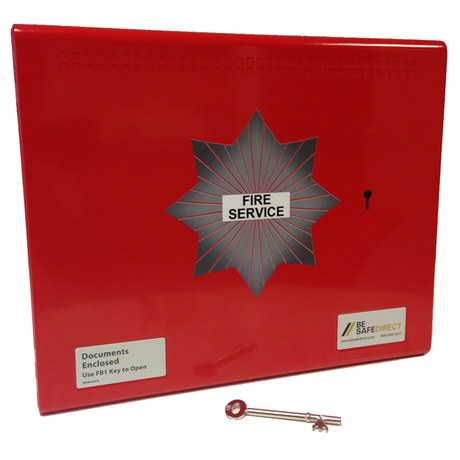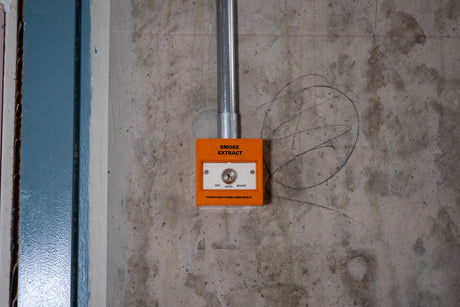What is smoke control?
Smoke control systems are designed for several distinct reasons. Primarily they protect escape routes for occupants to evacuate the premises safely, without being hindered by the effects of smoke. Alongside this they enable firefighters greater access to gain entry and tackle the fire more efficiently. Additionally, smoke control systems are implemented to protect stock and machinery and reduce the risk of explosions or potential building collapse.
Smoke control systems are most effective when the fire is still burning. They help remove and restrict the movements of smoke effectively, offering vital extra time for occupants to escape the building before being affected by the effects of smoke inhalation.
To ascertain the right level of control required it's essential to enlist the help of an approved fire safety consultancy. In most cases, CFD modelling will be utilised to determine the spread of smoke throughout the building. With this information the Consultant can specify an appropriate and effective smoke control solution.
How do smoke control systems work?
Smoke control systems work by containing or removing smoke and heat from the building to provide safe passage routes for occupant to escape. There are two main systems; their use will depend on the building and outcome of fire consultation as to which will be specified.
Every building is different and will have certain requirements that need to be met, with the assistance of a fire safety consultant the most effective system can be put in place. An experienced consultant will always look to rationalise design in order to reduce costs, retain the integrity of the architect's vision and improve occupant safety.
Natural smoke ventilation
This system comprises of several components working in harmony to utilise natural air-flow and smoke buoyancy to inhibit the spread of and remove smoke from key areas of the building. Without the need for any forced ventilation, a natural system will help vent the smoke using a series of AOVs (Automatic Open Vents) offering a dependable option.
A natural system also benefits from being self-compensating, as the smoke temperature increases the greater its buoyancy becomes and in turn the more effective the vents become.
Mechanical smoke ventilation
Mechanical Smoke Ventilations systems comprise of large, high-powered fans to help extract the smoke from the building. The assistance of a fire safety consultant will help determine whether a mechanical system is required. Whilst mechanical systems are more effective at extracting smoke in most applications, there are several factors that need to be considered.
Mechanical systems require power to operate, so a standby power supply will need to be in place for the system to operate in case of power failure. Since a mechanical system uses large fans, there are noise and weight factors associated with them. As with any system with an increased level of components, they require on-going service and maintenance, which in turn could elevate costs.
Natural vs Mechanical
Natural
+ Require no forced ventilation
+ Offer dependable operation
+ Are self-compensating
+ Offer no time or temperature limits
+ Operate silently
- Sensitive to wind effects
Mechanical
+ Not wind pressure sensitive
+ Dedicated air inlet
+ Extract smoke quickly
+ Provides greater design flexibility, allowing extended travel distances
+ Enables the use of shafts as small as 0.5m2 or 0.6m2
+ Has the ability to provide substantial space saving benefits
- Have a fixed extract volume (dependant on CFD)
- Noise and weight considerations
- Require standby power unit
How is smoke control governed?
Statistics show that in the event of a major fire 60% of all fatalities are caused by smoke. This demonstrates the importance of effective smoke control systems to ensure escape routes are kept free of smoke for as long as possible.
Specifying a compliant system is a crucial element of any smoke control system. Working alongside a fire safety consultant will ensure that all the required regulations are considered, and actions taken to meet them.
The current regulation governing the implementation of smoke control and ventilation systems are as follows. These are always changing and being updated as more research and development is conducted.
- The Building Regulations 2000: Approved Document B
- Codes of practice: BS 9999, BS 9991
- Specifications: EN 12101 Parts 1, 2, 3, 6, 7, 8 & 10
- Design Guidance: BR 368 Design Methodologies for Smoke & Heat Exhaust Ventilation
- BS 7346- 4, 5 & 7, CEN TR 12101-5
- BS 7974
Smoke Control Systems save lives, if they are working
Specifying the smoke control system is all very well, but if the system is not supported by a comprehensive service and maintenance plan, then all the hard work could be in vein. It's crucial to ensure that a plan is in place to safeguard the system performance for when it is called upon.
In the event of a fire building owners and occupants rely on the smoke control system to operate as intended, providing safe passage out of the building. A smoke control system is a comprehensive network of components and it's essential to test to ensure each component will work effectively in the event of a fire.
What is smoke control?
Smoke control systems are designed for several distinct reasons. Primarily they protect escape routes for occupants to evacuate the premises safely, without being hindered by the effects of smoke. Alongside this they enable firefighters greater access to gain entry and tackle the fire more efficiently. Additionally, smoke control systems are implemented to protect stock and machinery and reduce the risk of explosions or potential building collapse.
Smoke control systems are most effective when the fire is still burning. They help remove and restrict the movements of smoke effectively, offering vital extra time for occupants to escape the building before being affected by the effects of smoke inhalation.
To ascertain the right level of control required it's essential to enlist the help of an approved fire safety consultancy. In most cases, CFD modelling will be utilised to determine the spread of smoke throughout the building. With this information the Consultant can specify an appropriate and effective smoke control solution.









